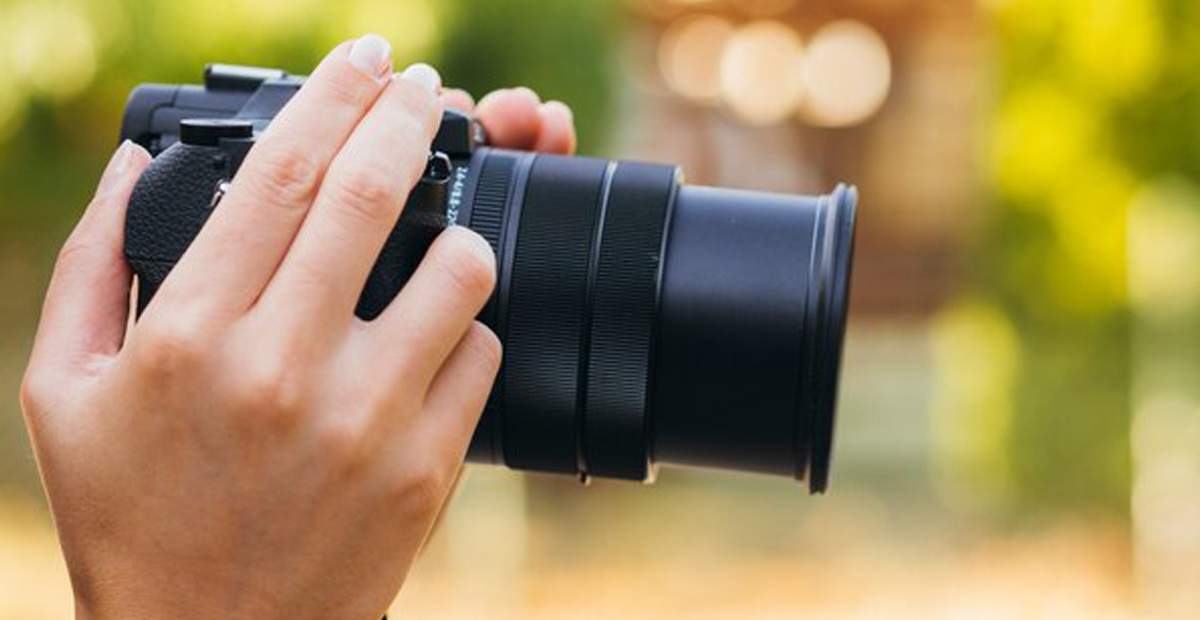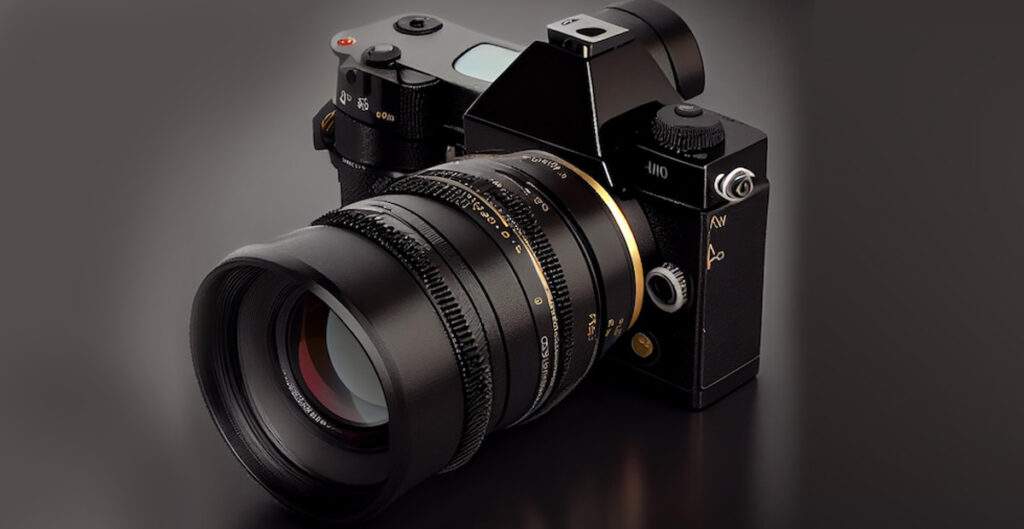“Do you Want to make your product photos truly stand out?” Wondering which camera is best ?” Look no further! We’re here to help you explore the world of camera for product photography so that you can capture your creations in the best possible light.

Product photography requires precision, attention to detail, and the ability to bring out any intricate features and textures. When it comes to capturing the essence of products and presenting them in the best possible light, choosing the right camera is essential. In the digital age, where visual appeal plays a central role in attracting customers, choosing the best camera for product photography becomes paramount.
The ideal camera for product photography must have the perfect combination of high resolution, versatile lens options, and excellent color reproduction. It will allow you to create stunning images that showcase the unique qualities of your merchandise, whether you’re shooting jewelry, furniture, fashion, electronics items, routine products, garments, or any other product.
In this comprehensive guide, we’ll explore the main competitors in the world of camera for product photography, taking into account factors like image quality, and affordability. Ultimately, you’ll know which camera is right for your specific needs and budget, helping you get compelling product shots that leave a lasting impression on your audience.
Top 3 Camera for Product Photography in 2023
Let’s take a look at the best camera for product photography in 2023
1)Nikon D850 Camera for Product Photography:
Technical Details of Camera for Product Photography:
- Sensor: 45.7-megapixel FX-format (full-frame) CMOS sensor.
- ISO Range: 64-25,600 (expandable to 100-102400).
- Autofocus: 153-point phase-detection AF system with 99 cross-type sensors.
- Continuous Shooting: Up to 7 frames per second (9 fps with optional battery grip).
- Viewfinder: Optical pentaprism with 100% frame coverage.
- LCD: 3.2-inch tilting touchscreen LCD with photo sensor size APS-C fps
- Video: 4K video capture resolution 2160p, Full HD at 120fps.
- Connectivity: HDMI, USB 3.0, microphone, and headphone jacks.
- Memory Cards: Dual slots for XQD and SD cards 16 GB
- Weight: Approximately 2 kg 960 g (without battery and memory card).
- Product Dimensions:30 x 26.9 x 22 cm; 2.96 Kilograms
Here are some of its Advantages and Dis-advantage of this camera :
Advantages:
- High Resolution: The D850 boasts a 45.7-megapixel full-frame sensor, delivering incredibly detailed and sharp images, making it ideal for landscape, studio, commercial, and product photography.
- Excellent Low-Light Performance: With an ISO range of 64-25,600 (expandable to 100-102400), the D850 performs exceptionally well in low-light conditions, reducing noise and maintaining image quality.
- Impressive Dynamic Range: The camera offers a wide dynamic range, allowing you to capture intricate details in both highlights and shadows, resulting in more balanced and dynamic images.
- Fast and Accurate Autofocus: The D850 features a 153-point autofocus system, including 99 cross-type sensors, ensuring quick and precise focusing, even in challenging shooting situations.
- 4K UHD Video: It can shoot 4K Ultra HD video at 30fps, and it offers a range of video features, including focus peaking and clean HDMI output, making it suitable for videographers as well.
- Tilting Touchscreen: The 3.2-inch tilting touchscreen LCD makes it easier to compose shots from various angles and navigate the camera’s settings.
- Dual Card Slots: It has dual memory card slots (one XQD and one SD), allowing for ample storage and backup options during long shoots.
- Durability: The camera is built to withstand rugged conditions, featuring a weather-sealed magnesium alloy body that is resistant to dust and moisture.
Disadvantages:
- Price: The Nikon D850 is relatively expensive, especially for beginners or hobbyists who may not require its advanced features.
- Size and Weight: It’s a bulky camera, which might be less appealing for photographers who prefer a lighter and more compact option for travel or street photography.
- No Built-In Flash: Unlike some other DSLRs, the D850 does not have a built-in flash, which means you’ll need to carry an external flash unit if you require additional lighting.

2)Canon EOS R5 Mirrorless Camera for Product
Photography:
The Canon EOS R5 is a high-end mirrorless camera that offers a range of impressive features.
Technical Details:
- Sensor: 45-megapixel full-frame CMOS sensor.
- Image Processor: DIGIC X.
- ISO Range: 100-51,200 (expandable to 50-102,400).
- Video Resolutions: 8K at 30fps, 4K at up to 120fps.
- Autofocus: Dual Pixel CMOS AF II with 1,053 AF points.
- Viewfinder: 5.76-million-dot OLED EVF.
- LCD: 3.2-inch, 2.1-million-dot vari-angle touchscreen.
- Image Stabilization: In-body image stabilization (IBIS).
- Burst Rate: Up to 20fps (electronic shutter) or 12fps (mechanical shutter).
- Connectivity: Wi-Fi, Bluetooth, USB-C, HDMI.
- Card Slots: 1x CFexpress, 1x SD UHS-II.
- Weather Sealing: Yes.
- Weight: Approx. 738g (body only).
Here are its advantages, disadvantages, and technical details:
Advantages:
- High-Resolution Sensor: The EOS R5 boasts a 45-megapixel full-frame CMOS sensor, providing excellent image quality with high levels of detail.
- 8K Video Recording: It’s one of the first consumer cameras to offer 8K video recording, making it a compelling choice for videographers who need ultra-high resolution footage.
- Impressive Image Stabilization: The camera features in-body image stabilization (IBIS) that works in conjunction with IS-equipped lenses, providing steady shots and smoother video.
- Fast Autofocus: The Dual Pixel CMOS AF II system offers quick and accurate autofocus performance, making it suitable for stills and video shooting.
- High Burst Rate: It can shoot at up to 20 frames per second (fps) in electronic shutter mode and 12 fps with the mechanical shutter, making it excellent for capturing fast-action moments.
- Versatile RAW Capabilities: The camera offers 12-bit RAW video recording and dual-pixel RAW, allowing for extensive post-processing flexibility.
- Vari-Angle Touchscreen: The fully articulating touchscreen LCD is highly versatile, making it easier to shoot from various angles, including selfies or vlogs.
- Weather-Sealed Body: The camera is built to withstand various weather conditions, making it suitable for outdoor and rugged shooting environments.
Disadvantages:
- Price: The EOS R5 is quite expensive, and may not be accessible for all photographers and videographers.
- Overheating Concerns: When recording 8K video or shooting in high frame rate modes, the camera can experience overheating issues, which may limit extended use for these features.
- Large File Sizes: 8K video and high-resolution images result in large file sizes, requiring substantial storage and processing power.
- Short Battery Life: Continuous use of power-hungry features can drain the battery quickly. It’s advisable to have spare batteries on hand for extended shoots.
- CFexpress Card Requirement: To fully utilize the camera’s capabilities, you’ll need CFexpress cards, which can be expensive.
The Canon EOS R5 is a powerful and versatile camera, especially suited for professionals and enthusiasts who appreciate high-resolution photos and 8K video recording. However, potential buyers should consider the price, overheating issues, and additional costs of a high-capacity memory card before making a decision.
3)Fujifilm GFX 100 Camera for Product Photography:
The Fujifilm GFX 100 is a medium format camera known for its high-resolution capabilities, making it a suitable camera for product photography. Here are its advantages, disadvantages, and technical details, with a focus on its suitability for product photography:
Technical Details:
- Sensor: 102-megapixel medium format CMOS sensor (43.8mm x 32.9mm).
- Product Dimensions: 25.4 x 20.32 x 20.32 cm; 1.4 Kilograms
- ISO Range: 100-12,800 (expandable to 50-102,400).
- Video Capabilities: 4K video & Resolution 2160p.
- Autofocus: Phase-detection autofocus with 3.76 million phase-detection pixels.
- Viewfinder: 5.76-million-dot OLED EVF.
- LCD: 3.2-inch, touchscreen.
- Image Stabilization: In-body image stabilization (IBIS)
- Color: Black
- Weight: Approx. 1.4 kg (body only).
Advantages :
- Medium Format Sensor: The GFX 100 features a 102-megapixel medium format sensor, providing exceptionally high-resolution images with great detail. This is ideal for capturing products with intricate textures and fine details.
- Image Quality: The medium format sensor delivers superb image quality with excellent color reproduction and dynamic range, allowing for stunning product shots.
- Large Sensor Size: The larger sensor size allows for a shallow depth of field, making it easier to achieve beautiful background blur (bokeh) and isolate products effectively.
- In-Body Image Stabilization (IBIS): IBIS helps reduce camera shake, ensuring sharp images even in low light or when using slower shutter speeds for product photography.
- Tethering Support: The GFX 100 supports tethered shooting, allowing you to connect it to a computer for real-time image review and control, a valuable feature for studio camera for product photography.
- Robust Build: The camera is built to withstand professional use, featuring weather sealing and a durable magnesium alloy body.
Disadvantages :
- Price: The GFX 100 is a high-end camera, and its cost may be prohibitive for some photographers, especially those starting careers in product photography.
- Size and Weight: Medium format cameras are typically larger and heavier than standard DSLRs or mirrorless cameras, which might not be ideal for on-the-go product photography.
- Limited Lens Options: While Fujifilm has been expanding its lens lineup for medium format cameras, the selection may not be as extensive as that for other camera systems.
- Slower Autofocus: The GFX 100’s autofocus system, while accurate, may not be as fast as some other cameras, which could be a concern for capturing fast-moving subjects.
In summary, the Fujifilm GFX 100 is a powerhouse camera for product photography, thanks to its high-resolution sensor, excellent image quality, and 4K video. However, potential buyers should consider the cost, size, and weight, as well as the availability of lenses for their specific product photography needs.
FREQUENTLY ASKED QUESTIONS (FAQs):
-
Which is the best camera for product photography?
The Nikon D850 and Canon EOS R5 are popular choices due to their high-resolution sensors and versatile lens options, making them excellent for capturing detailed product shots.
2. Do I need a full-frame camera for product photography?
While not mandatory, a full-frame camera like the Sony A7 III or Canon EOS R provides superior image quality and flexibility in achieving shallow depth of field, ideal for product photography.
3. What lighting setup works best for product photography?
Softbox or diffused light setups with controlled lighting angles are commonly used. Continuous LED lights or studio strobes, like the Godox AD200Pro, offer even and adjustable illumination for product shoots.
RELATED CONTENT:
Creative Product Photography l Strategies l Tips & Tricks

Pingback: Creative Product Photography l Strategies l Tips & Tricks -